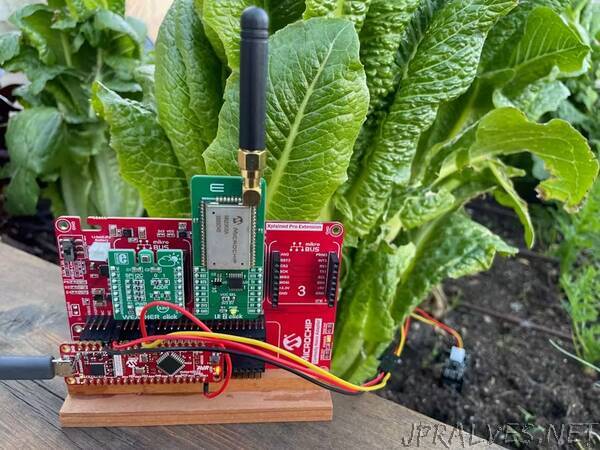
“Build an easy-to-deploy, low-power sensor node that monitors growing conditions and transmits data offsite where it’s securely accessible
Story
I. Background
Water conservation has become increasingly important for farms in the southwest, as more and more restrictions are enacted to protect the Colorado River Basin. This project began as a Capstone project at Arizona State University in partnership with Microchip Technology with the goal of creating a cost-effective, low-power solution for a local community garden that wanted to better manage water usage and monitor soil conditions throughout their plot. The growing beds were too spread out to benefit from WiFi® access and the sensor nodes needed to be battery-powered and long-lasting. This solution would need to help optimize irrigation schedules and take into account weather conditions as well as the soil’s local variability.
Picking a Micro
Our group originally settled on the ATtiny1627 for our microcontroller (MCU); this post extends that original version and replaces the ATtiny with a newer part, the AVR64DD32. Both of these boards are perfect for low-power applications due to their multiple sleep modes and independent peripherals that facilitate gathering sensor data while allowing the MCU to sleep most of the time.
Even Lower Power
LoRaWAN is ideal for this application, where we can trade off latency in delivering data for a much longer battery life. Soil doesn’t dry out or become saturated in milliseconds, so there is no need to send data more often than the 3-5 minute interval recommended by The Things Network. Because most of the power budget in the project is spent during the transmission of the LoRa packets, by reducing how often data is sent and thoughtful formatting of the payload, we minimize power costs without sacrificing important data.”
